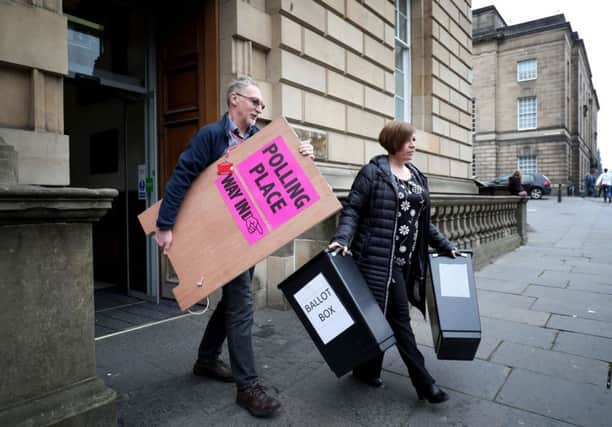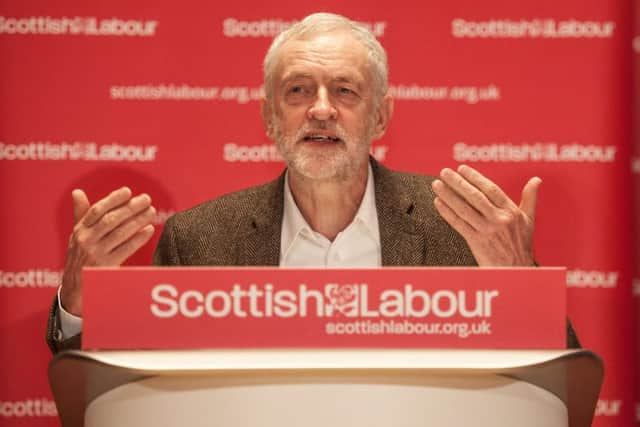General Election 2017: What polls say three weeks before the vote


It might feel like longer, but it’s now just under a month since Prime Minister Theresa May announced a snap election would take place on June 8th.
We are now just three weeks from polling day, and the prevailing wisdom still seems to be that the Tory leader will be returned to Downing Street off the back of a thumping majority.
Advertisement
Hide AdAdvertisement
Hide AdThe prevailing wisdom, however, was that Hillary Clinton would beat Donald Trump, we would have a hung parliament in 2015, and that Britain would vote to remain in the European Union.


With politics this unpredictable, it would be a brave person who would completely write off the election as a foregone conclusion.
We look at the polling picture to see if there are any positives for Labour’s Jeremy Corbyn, how the Scottish landscape looks, and whether those betting at short-odds on a Tory majority are just letting the bookmakers keep their money warm.
A Corbyn bounce?


One of the things that went somewhat unsaid during the furore over the leaked details purporting to form the basis of Jeremy Corbyn’s manifesto is that many of the policies were incredibly popular.
While they still remain wary of the Labour leader, the British public is on board with plans including renationalising railways and banning zero hours contracts among the most well-liked.
A run of polls in the lead up to Theresa May shocking the political establishment as much as the public with her announcement had the Tory lead averaging nearly 20 per cent.
That lead has more or less held up in the month since the Prime Minister stood on the steps of Downing Street to seek what she called a strong mandate for Brexit.
This weekend, however, two polls will have given the under-pressure Labour leader some respite as he tours the country to drum up support.
Advertisement
Hide AdAdvertisement
Hide AdA pair of surveys featured in Sunday papers had the Labour party on the relatively high mark of 32 per cent, ‘just’ 14.5 per cent behind Theresa May’s Conservatives.
Scotland – a league of our own?
The Scottish picture is always harder to piece together when in the midst of a UK election campaign, all parties have a bad habit of extrapolating favourable data from tiny Scottish sub-samples on national polls.
One thing is clear, as it has been for well over a year, there is a quantifiable Tory revival in areas in Scotland which have been no-go for Conservatives for years.
Polling suggests that a swathe of former Conservative seats could return to the party for the first time in decades as Labour continue to decline and the SNP show signs of stagnating.
The most recent regional voting intention in Scotland from Yougov, taken before the local election results, show the Conservatives almost doubling their projected share of the vote from 2015, going from 15 per cent to 28.
This surge is at the expense of all three rival parties, with Labour down six points from 2015, and the Lib Dems losing a percentage point.
Even though the results suggest that the SNP remain by far and away the dominant force in Scottish politics, their protected vote share is down from 50 per cent in 2015 to 41 per cent now.
Local considerations
One of the things that polling doesn’t tell us, is the local issues and personalities that often form the backdrop to constituency seats.
Advertisement
Hide AdAdvertisement
Hide AdThis is especially true of the recent polling conducted by Conservative peer Lord Ashcroft, which has political figures on all sides excited for a variety of reasons.
The poll had a sample size of over 3,000, almost triple what the accepted minimum standard is – with a huge surge in Tory support confirmed.
Nicola Sturgeon’s SNP were on 41 per cent, as in the Yougov poll, with Labour on 17 per cent and the Tories surging up to 30.
This would leave Labour without a single seat, as the Tories increase to 12 and the Lib Dems improve slightly from one to three.
As our recent profile of the seat shows, however, Ian Murray’s seat does seem set to stay in Labour hands.
Other seats predicted to change hands, like Moray, might be harder to snatch than basic polling suggests – Angus Robertson has represented his Moray constituency for 16 years and will be be tough to dislodge.
As the cliché favoured by politicians goes, the only poll that matters is the one on election night, but the lack of movement since the election was called still makes anything other than a comfortable Conservative victory hard to envisage, with Ruth Davidson’s revival in Scotland set to continue.
To borrow another cliché, no matter what the polls say now, there’s still a very long way to go.